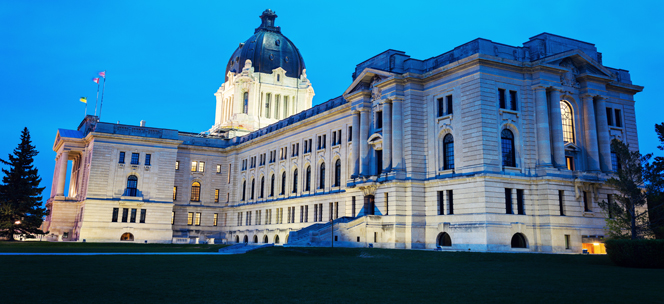Balancing the budget is good, but the debt needs to go down

The Saskatchewan government has kept its first promise to taxpayers by balancing its operational budget. But the province’s finances aren’t fixed yet. Saskatchewan needs a plan to start paying down the debt to keep its next promise.
Finance Minister Donna Harpauer is projecting a $34 million operational budget surplus. That’s a thin margin on a $15-billion budget. Still, it’s the first time since 2015 that the government has budgeted to have a little left over after paying the bills and that’s a good thing for taxpayers.
Here’s why: Saskatchewanians will pay $694 million just to cover interest payments on the existing provincial debt. That’s money that won’t go to textbooks or hospital beds. It won’t go toward the tax relief for Saskatchewan families. And those debt interest payments keep going up.
That’s why the Canadian Taxpayers Federation made balancing the operational budget by 2019 the top priority during the Saskatchewan Party leadership campaign. It was the first point on our Taxpayer Protection Pledge, which Scott Moe signed. This budget kept that promise.
But it’s only the first step.
Saskatchewan’s debt is still going up and fast: this year the taxpayer-supported debt (excluding Crown corporation debt) will go from $10.8 billion to $12 billion.
The government says it’s borrowing for infrastructure spending rather than day-to-day operational expenses.
All governments like to categorize different types of debt. From a taxpayers’ perspective, it’s like arguing about which end of the bathtub to fill with water. There’s a commonality to all of this debt. All of it will drive up those interest charges by tens of millions of dollars every year. All of it will have to be repaid by taxpayers.
That’s why we included another important point to that taxpayer protection pledge. When Moe signed it, he promised to: “implement a plan committed to reducing the province’s taxpayer-supported debt by 2022.”
That promise has deep roots.
“There is no greater legacy we can leave our children and grandchildren than a growing, prosperous and debt-free province,” stated the Saskatchewan Plan for Growth presented by former premier Brad Wall in 2012.
Balancing the operational budget is the first step, but the job isn’t done: the budget will only be truly balanced when government stops adding to the debt. It’s good to make sure the paycheque can cover the groceries and phone bills, but it’s also important to pay down the car loan.
For a debt-free Saskatchewan to be more than a daydream, the province needs a plan. Governments generally pick one of two options in these situations: raise taxes or control spending.
That brings us to the final point on the Taxpayer Protection Pledge where Moe promised: “not to impose any major tax increases.”
The recent budget kept that promise and didn’t raise taxes.
That’s essential. Many Saskatchewan families are struggling in a tough economy. Saskatchewanians are already struggling with the mammoth cost of the PST hike and expansion the province imposed a few years ago.
The numbers are stark. Before the PST hike, the province collected about $1.2 billion through the PST. This year, with the higher PST that’s charged on more items, the government is planning to collect about $2.3 billion. In short, the provincial government is balancing the operational budget because Saskatchewanians are paying a billion dollars more in sales taxes.
Raising taxes even higher is off the table, so the only option is to control spending. This year, spending is going up by $382 million. Though the government promised spending cuts in conjunction with the PST hike, few have materialized.
Cuts require tough choices. But Saskatchewan must choose whether to control spending now to pay down debt or control spending later to make ever-increasing debt interest payments.
Harpauer’s balanced operational budget is strengthening Saskatchewan’s finances. But the next step is paying down debt. That will require hard work, but the result will be worth it: a debt-free Saskatchewan.